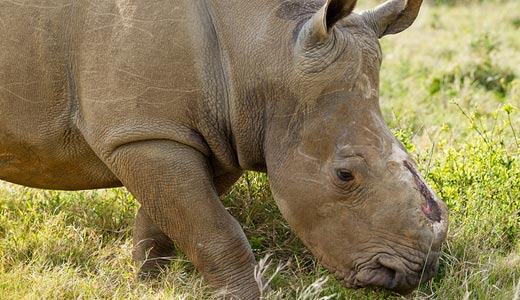
“This is a war. You cannot take a stick to a gunfight.” These are the words of Ivor Ichikowitz, executive chairman of Paramount, a company that designs aircraft and weapons technology.
South Africa is now working with the company to fight not a military conflict but a war by poachers against the nation’s wildlife. In particular, they are employing the company’s technology in an attempt to save the country’s rhinos from extinction at the hands of the poachers.
Thanks to a high-tech aircraft donated by the firm, the South Africa National Park Service is able to put down its proverbial sticks, and will now have a better chance at catching poachers who are often armed to the teeth with modern weapons.
Called Seeker, Paramount’s anti-poaching aircraft is a low-speed reconaissance plane that will try and detect illegal poachers in the country’s Kruger National Park. Equipped with intricate heat sensors capable of detecting both animal and human presence. The technology is seen as the first strong step to combat the increasingly elaborate weaponry used by perpetrators of the illegal wildlife trade, which includes assault rifles, helicopters, and night-vision goggles.
This development comes less than a month after eight rhinos were brutally killed by poachers, with shots to their lungs and hearts, the goal being to harvest their horns for spiritual and medicinal purposes, though they have no actual medicinal properties. But the cultural significance of rhino horns, and the subsequent demand for them, both in Asia and parts of Africa, has caused poaching to develop into a sophisticated criminal network.
The illegal activities have become such a worldwide problem that U.S. Secretary of State Hillary Clinton called for a major plan to fight poaching, which would require aggressive policing backed by intelligence organizations including the CIA and the NSA.
The anti-poaching plane is a huge leap forward, as just this past month, park rangers and dog patrols were one of the only defenses against localized poaching incidents.
Jason Bell, director of the International Fund for Animal Welfare, said, “The killing of rhinos for their horns does not exist in a vacuum, but is a complex problem where values of traditions and culture have been corrupted in the name of commercial exploitation.
“Be it elephants and ivory, tigers and tiger parts, rhinos and rhino horns, the endpoint is the same – profit. And that profit is being chased down in the most brutal fashion by organized crime syndicates.”
Ichikowitz said the situation has become so dire that “you have to fight fire with fire.
“The thermal imaging technology [of the anti-poaching aircraft] will deliver more powerful observation capability to the Kruger National Park’s rangers, making it difficult for poachers to hide.”
Photo: Rhinos are increasingly threatened, with many of their species dwindling, due to constant poaching for their horns. alcuin/Flickr











